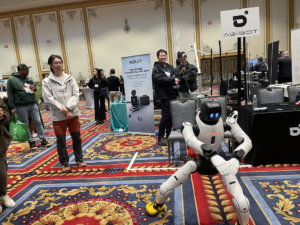Global Capability Centers (GCCs) have been an essential part of corporate strategy for decades, offering access to global talent pools that can enhance a company’s organizational capabilities and provide critical support to sustain periods of rapid growth. Traditionally, these centers were designed as a cost-saving option for companies with large-scale operational needs, serving as offshore or nearshore hubs for many services such as finance, IT, and customer service.
A New Era for GCC Impact
In the past, companies considering GCCs tended to bring in consultants to advise on things like location, building codes, labor/tax issues, etc. GCCs were primarily used to help companies concentrate on their core competencies while letting centers in other places support back-office functions. These GCCs tended to be large, employing 1,000+ workers, and they didn’t make financial sense for mid-sized companies where the cost would exceed the ROI.
However, the huge uptick in demand for digital capabilities and innovation has changed this paradigm. With emerging opportunities to innovate with AI/GenAI on the rise, companies are under pressure to capitalize quickly, and the need for offshore/nearshore IT talent surged. These realities have put the legacy GCC model under the microscope, causing C-Suite leaders to reevaluate how they can maximize value.
How to Enhance Your GCC Value Proposition
Rather than viewing GCCs as mere transactional support, C-Suite leaders need to think about these centers as strategic enablers. In practice, that could mean anything from streamlining/transforming existing GCCs to forming multiple new smaller GCCs to evaluating if you even need a GCC at all. Regardless of the approach, here are a few core considerations for evolving your GCC strategy to meet modern demands:
1. Ensure Value Beyond Setup
C-Suite leaders often lionize fast decision-making, but instead of skipping straight to determining “how” to set up a GCC, companies should spend some time thinking about the “why.” This discovery process can yield critical insights into what success looks like and can reduce the risk of going down the wrong path. An evolved GCC model prioritizes value delivery beyond setup and focuses more on long-term strategic impact than short-term functional support – transforming global capability centers into global innovation hubs.
This focus on value doesn’t mean that cost savings can’t happen in parallel. The emergence of the GCC-as-a-Service model, which enables rapid setup and deployment, shows how companies can gain the advantages of a GCC without the complexity of setting up legal entities, managing real estate, or acquiring the necessary talent and IT infrastructure, thereby lowering the total cost of ownership (TCO). By balancing cost efficiency with value creation, the C-Suite can maintain operational excellence while still driving strategic growth.
2. Align GCCs With Core Business Objectives
The goal of any new GCC should be to increase value through innovation, not just cut costs through operational changes. This means you could create a GCC to reduce costs by 30%, but if you don’t get any additional long-term value, you’re paying less without achieving more. The real goal should be to reduce costs by 30% while also increasing value by 30%. Some upfront investment will always be necessary in establishing a GCC, but companies also need to consider outcomes. ROI is not just about a return on investment- it’s about a return on innovation.
Another key consideration is “unbucketing” certain capabilities from larger functions. For example, given the increased importance of data and analytics in powering AI/GenAI capabilities, those skills should be categorized as their own entity, instead of bucketing them in with IT. Yes, data and analytics are usually part of IT, but companies can make the mistake of focusing too much on investing in general IT operations, instead of making data and analytics a priority function. Given the increased demand for AI talent, companies can establish these GCCs as data analytics centers of excellence that can augment other parts of the business.
3. Create Collaborative Ecosystems
Companies have begun to recognize the importance of designing GCCs as collaborative ecosystems that can increase their ability to adapt to change. And when the priority shifts from cost efficiency to innovation, teams can feel more empowered to experiment, and new cross-functional opportunities may arise.
This starts with C-Suite leaders rallying internal support for GCCs and having honest conversations with functional managers about existing investments in technology, talent, and culture. Are they being proactive with their solutions, or simply reactive to current demands? Do they have the skills to take advantage of new AI/GenAI capabilities, or is there an opportunity to upskill teams? Open communication is vital at this stage, and by involving others in the process, companies can foster a culture of continuous learning.
The GCC Innovation Engine
While the traditional approach to GCCs enabled large organizations to reduce costs and improve back-office efficiencies, it’s clear that there are now opportunities for companies of all sizes to adopt a new GCC model focused on innovation and value. By viewing GCCs as strategic enablers, companies can accelerate digital transformations, better leverage global talent for creative problem-solving, and position themselves for sustainable growth.











